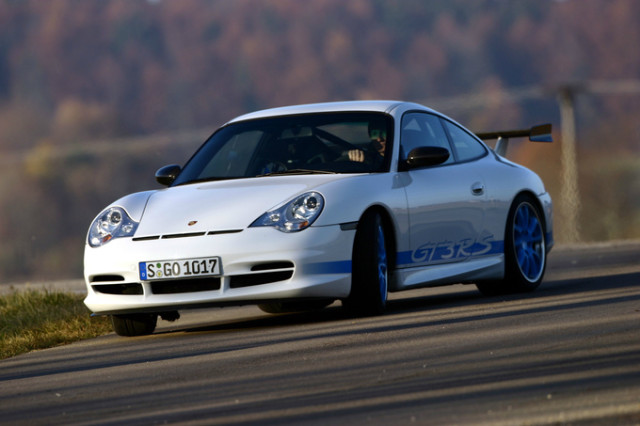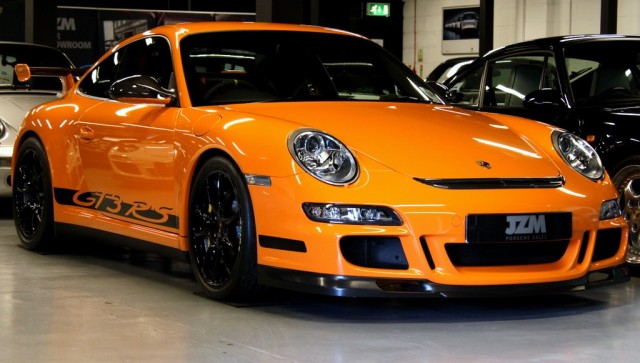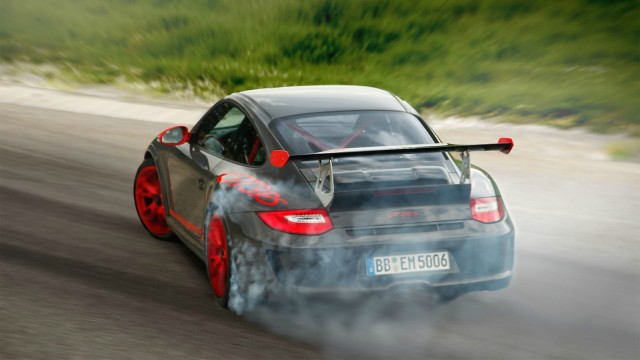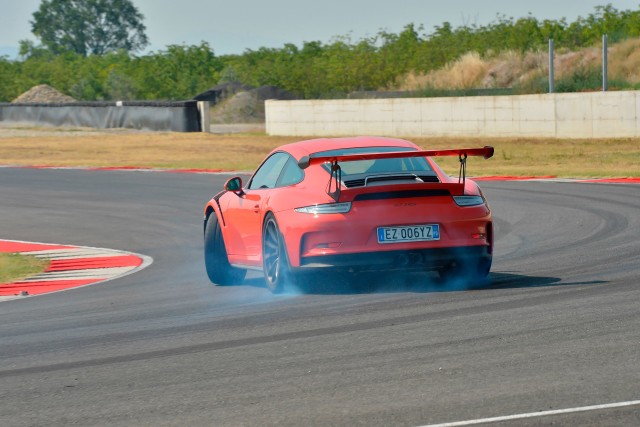It’s fairly well-known that among trackday aficionados, the 911 GT3 measures highly. Like Miatas, the GT3 RS is almost guaranteed to make an appearance at any high-performance driving event at a reputable track.
The precision, response, and agility of the car has made it something of a halo car. Never the most powerful track car on the market, the GT3 RS is a machine that understands the value of subtleties. A very detailed and immersive relationship between the driver and car all contribute to a confidence-inspiring machine that encourages drivers to flirt with the limit and find that extra tenth.
996 GT3 RS
The GT3 RS has been developed over the course of nearly two decades to give us the magnificent 991 GT3 RS which currently commands prices $100,000 over sticker. The first generation was a raucous car, as was the second generation and all the variants within. The first-gen 996 GT3 RS was not available in the US or Canada, but for some, that’s alright. It might not be the prettiest with its broken egg-headlights, narrow hips, and a Volkswagen interior, but there’s a reason it came fitted with a cage.
The 996 GT3 RS more than makes up for being the ugliest sibling in the family. Generally speaking, it’s the liveliest and most intimidating of the bunch. It also boasts incredible steering feel and a progressive suspension setup since it lacks PASM. The conventional, progressive springs and shocks transmit a little more detail to the driver at the expense of worsened road manners, but this is a track car, after all.
Narrow tires, 400 horsepower, and no driving aid in sight, the 996 GT3 RS is nearest in spirit and execution to a cup car. Seeing as it was the first GT3 RS Porsche made, it’s easy to understand the lack of comfort and civility. It’s equally understandable that the successive generations of these cars were made more driver-friendly, plusher, and more versatile. In short, better road cars.
997 GT3 RS Mk I
Though Porsche markets sports cars to a limited audience, they’re savvy enough to know that almost everyone values amenities. For instance, the Boxster and the Cayenne were two softer machines that Porsche used to drag themselves from the doldrums. While the 997 GT3 RS is not a cruiser or a grand tourer by any stretch, it has made a few concessions towards being a softer machine.
That isn’t to suggest the car is soft of docile, but the 997, fitted with the supple but less-involving PASM system, adjustable suspension, an adjustable baffle in the exhaust, traction and stability control, is obviously designed to not rattle one’s fillings out on the public roads. It’s an attempt to make what was once a dedicated track car with license plates into a car suitable for the road. It’s a compromise that still leans strongly towards the hardcore end of the spectrum, but it doesn’t make everyday driving torturous. Supporting this notion are improved interior quality, better fit-and-finish, and more compliance over bumps and seams in the asphalt.
Where the 996 GT3 RS skips over nuances in the road, the 997 soaks them up without breaking a sweat. For canyon carving on surfaces that aren’t perfectly smooth, this car is undoubtedly the better of the two. Additionally, it compensates for a very slightly-dulled edge with more power and more grip.
997 GT3 RS Mk II
The second generation of the 997 improved the interior by adding a proper satnav system, thus building on the attractive 997 dash and instrument panel. Additionally, a wider front track was implemented to combat the 911’s inherent understeer problem. An extra 30 horsepower and a wider powerband thanks to a 3.8-liter motor gave the car even more urgency from down low.
Fundamentally, the platform is not totally different from the 997, but is again an improvement in the crucial areas, as is the Porsche ethos. This continues with the 991 GT3 RS, which uses a Mercedes S-class-quality interior and an automatic transmission to give it credibility in the comfort department, and rear wheel steering to help rotate the ever-lengthening chassis.
It’s easy to say that the GT3 RS has become somewhat softer as time has gone on, but it’s an unfair assessment. The car is still brutal, raw, and incredibly direct. For the totally unadulterated experience, the elder statesman might have the most to offer, assuming the track is perfectly smooth and the driver is willing to contend with a lively rear axle and a recalcitrant front. It’s certainly the wildest of the bunch.
For a backroads blast and the reluctant grocery store run, the newer cars have more to offer. Either way, the fact remains that Porsche has managed to retain that scintillating experience despite the car growing heavier, longer, and plusher. This is done through an increase in grip and compliance, and using modern technology to push the game forward. It would be shortchanging the newer machines to label them as merely more competent – no. The 997 GT3 RS is still, fundamentally, a driver’s car and one that is not too forgiving on the limit. However, when the track gates close and the kids need some cold cuts, it’s not too serious to take to Safeway. This blend is something few cars are really capable of, and that’s why Porsche’s GT3 RS is, in some ways, in a class of its own.

























